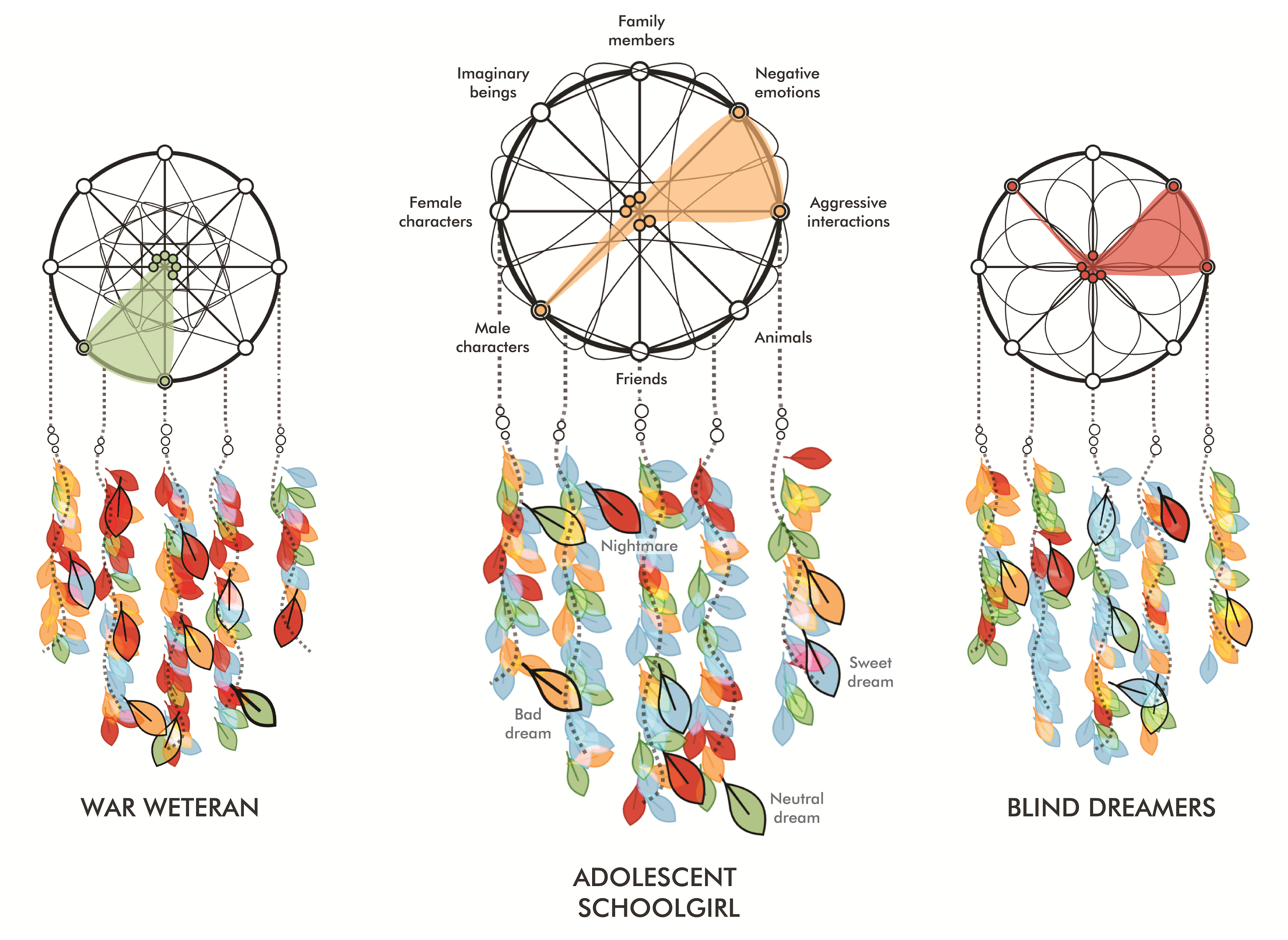What do our dreams say about us?
Epidemic dreams: dreaming about health during the COVID-19 pandemic
Computer analysis unearthed buried psychological reactions to the COVID-19 pandemic.Why were our dreams during the pandemic weird? In a collaboration with Harvard Medical School, we tackled that question by combining state-of-the-art research in Network Science and Machine Learning. We developed state-of-the-art Natural Language Processing algorithms that can reliably extract health mentions from text. These algorithms processed more than 2000 dream reports one the researchers collected, and 57 million tweets which reflected waking-life experiences. We were then able to test what psychologists call the continuity hypothesis. This says that dreams reflect a dreamer’s quotidian experience rather than Freudian violent urges or sexual repression.
Unsurprisingly, we found that dreams were aligned with waking-life experiences: people both posted and dreamed of COVID-19 symptoms such as cough and fever. Yet, more interestingly, the world of dreams departed from the real world in significant ways. Dream reports contained surreal conditions, often unrelated to the virus. People dreamed of attacks of bugs, grasshoppers, and maggots. They also dreamed of teeth and hair falling apart, and of body parts being deformed (e.g., ``long bodies with very short legs’’) or turning into powder. It turns out that sleep deforms real-life experiences through the lens of emotions and figurative imagery, and that these unrealistic health experiences mirrored worries that were otherwise hard to express.
The study suggests that there is a hidden, perhaps subconscious, layer of unexpressed reactions to the virus. If the virus continues to run rampant through the world, it will soon become endemic, and dreams could become a subject of serious scientific scrutiny to partly deal with the long-lasting effects of the pandemic.

Our dreams, our selves: automatic analysis of dream reports
Sleep scientists often refer in their research to the continuity hypothesis, According to it our dreams directly reflect what happens in our real lives.
We designed and developed The Dreamcatcher – an interactive visual tool that explores the link between dreams and waking life through a collection of dream reports. The aim of the Dreamcatcher was to increase the general public’s awareness about the benefits of dream analysis.
The tool allows to explore sleep patterns and dive into single dreams of real people who recorded their dreams for research purposes.

The Dreamcatcher: Launch demo
Publications
- Epidemic dreams: dreaming about health during the COVID-19 pandemic. Royal Society Open Science, 2022 PDF
- The Dreamcatcher: Interactive Storytelling of Dreams. IEEE Computer Graphics and Applications, 2021 PDF
- Our dreams, our selves: automatic analysis of dream reports. Royal Society Open Science, 2020 PDF